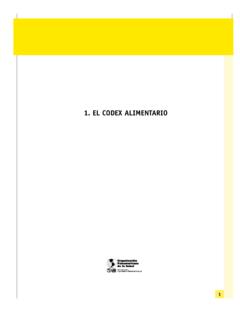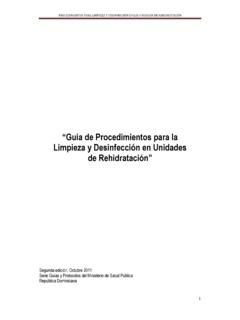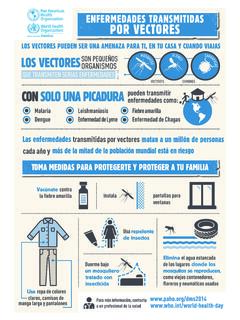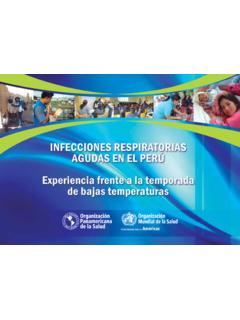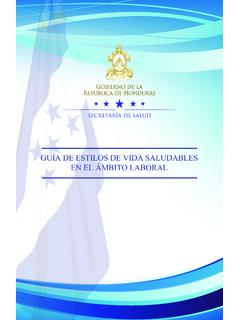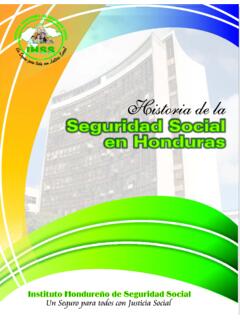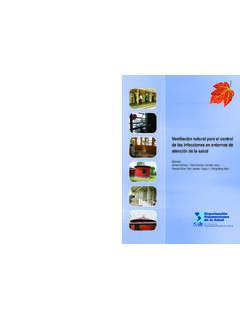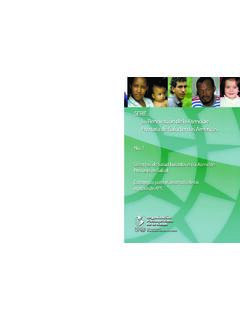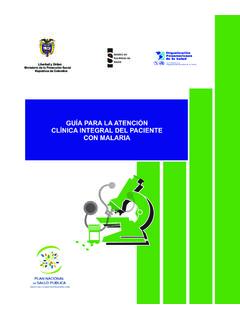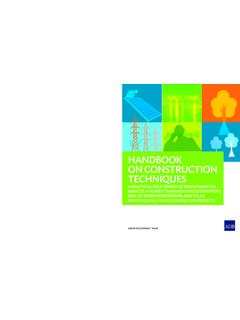Transcription of HEALTH SYSTEM AND SERVICES PROFILE OF JAMAICA edition ...
1 HEALTH SYSTEM AND SERVICES PROFILE OF. JAMAICA . st (1 edition , March, 15, 1999). (Revised, August, 30, 1999). nd (2 edition , December 5, 2001)*. ORGANIZATION AND MANAGEMENT OF HEALTH S YSTEMS AND SERVICES P ROGRAM. DIVISION OF HEALTH S YSTEMS AND SERVICES . PAN AMERICAN H EALTH O RGANIZATION. EXECUTIVE SUMMARY. An independent state in the Commonwealth Caribbean since 1962, JAMAICA is governed by a constitutional parliamentary democracy based on the Westminster/Whitehall model from England. Overall, there was little or no growth in the Jamaican economy during the decade of the 1990s. A major factor was the collapse of the financial sector (banks and insurance companies). in 1996, which had an impact on the entire economy. Despite the lack of growth in the formal economy, there have been significant improvements, a dramatic drop in the inflation rate and poverty rate.
2 According to the International Monetary Fund (IMF) the worst is past and the economy will be making a slow recovery towards growth in the foreseeable future. Like many small and developing nations, the economy is fragile and highly vulnerable to a number of external and internal factors. The pressures of the global economy, remittances from abroad and natural disasters are prime examples. Tourism, especially the North American market, is the major earner of foreign exchange. A significant internal factor is the informal economy. Over the past two decades, debt servicing has claimed about one-half of the government operating budgets. Multilateral institutions are the largest providers of funds to the country, usually as loans. Life expectancy at birth is years. Life expectancy by gender is years for males and for females. The trend has been relatively stable over the past decade.
3 Population growth rate in 1999 was The rate of growth has been slowly decreasing over the latter half of the decade. Fifty percent of the population lives in urban areas, 43% in the Kingston Metropolitan area. In 1998, of the population was reported as living in poverty (72% of the poor living in rural areas, with 13 percent in Kingston and the remaining in smaller towns). The ratio between the top and bottom 20% in terms of income is The official unemployment rate is 15%. Historically, the predominant organizational model for the HEALTH SERVICES has been the traditional physician-lead model with a heavy reliance on nursing personnel. The public sector, the Ministry of HEALTH (MOH), is the foundation of the SYSTEM , supplemented by a loosely regulated private sector. The Ministry of Finance and Planning is the primary financier of HEALTH SERVICES , other than out-of pocket payments by consumers.
4 The sector reform (HSR) plan proposes to change the SYSTEM to where the MOH Head Office provides a policy making, steering and regulatory role. Responsibility for the management and delivery of SERVICES rests with the decentralized Regional HEALTH Authorities (RHAs). The MOH largely drives the production and distribution of the sector's human resources. Within the context of public sector reform and HEALTH sector reform, the Ministry of Education will play a major role in the training of human resources for HEALTH . Drugs and other HEALTH care supplies and equipment are largely imported, although 1. Pan American HEALTH Organization there are a small number of manufacturers of medical supplies in the country. Traditionally, the management of equipment and technology has been an area of weakness within the MOH. The lack of financial resources, trained technical personnel, parts and equipment for repairs, and management are the leading problems.
5 This area is receiving more attention under the sector reform program. The MOH HEALTH Head Office performs its steering functions by developing policy, standards and regulations, and proposing legislation to Parliament. The MoH also performs a number of regulatory functions, the inspection of eating establishments, food and pharmaceutical manufacturing plants, and the licensing of practitioners and institutions. Some regulatory functions are managed at the regional level, public HEALTH inspections. Government largely controls HEALTH sector financing. The lack of adequate financial resources for HEALTH SERVICES is a major problem. Government estimates the financial resource gap to be about 30% of requirements. Data on the actual delivery costs and performance needs to be strengthened. The Ministry of Finance and Planning largely determines the budget and controls the cash flow, although the MOH and RHAs have a significant degree of autonomy.
6 There are two HEALTH insurance models in existence. The public sector is based on the British National HEALTH Service model where HEALTH is considered a public good and government provides care at little cost. The second model is the private HEALTH insurance model, which covers about 10% of the population. Private HEALTH insurance is loosely regulated. The level of detail, reliability and timeliness of information on the financing of HEALTH care needs to be improved. Information on the financing and performance of the private sector is not collected. The foremost objectives of the HSR are financial sustainability; quality assurance, equity, a steering role for the MOH head office, and decentralization of management authority. However, no information SYSTEM has been established to monitor the progress and impact of the HSR. Equally, the existing HEALTH management information systems have not been modified to capture the changes caused by reform.
7 Hence, it is difficult to monitor and evaluate the impact of HSR. on HEALTH service operations and HEALTH status outcomes in a systematic manner. The HSR. program has been making progress albeit at a slow and steady pace. The program is comprised of many components and activities . Progress has been made in a number of areas, however, the degree of development or implementation varies considerably. A comprehensive program evaluation and enhanced data is required for more in-depth analysis. Given the limited available information, it appears that the most successful components of the reform may be Decentralization, reorganization of the MOH central office and human resource training. Significant resources have been used to train and reorient public HEALTH service workers, especially in the area of management. 2. 1. THE CONTEXT. Political Context An independent state in the Commonwealth Caribbean since 1962, JAMAICA is governed by a constitutional parliamentary democracy based on the Westminster/Whitehall model from England.
8 Parliament consists of a governor-general who represents the Queen, and a bi-cameral legislature, which includes an elected House of Parliament and appointed Senate. The Cabinet of Ministers forms the executive branch, which is headed by a Prime Minister. There are two main political parties. The Ministry of HEALTH is responsible for political, fiscal, and administrative decentralization within the HEALTH SYSTEM . The five main political and social problems that affect the HEALTH situation or the performance of the HEALTH SERVICES are: poverty; inadequate financing; provider and public demands for high quality HEALTH SERVICES for little cost; chronic shortages in a number of HEALTH professions; and, little control or regulation over the private HEALTH sector. Economic Context There was little or no growth in the Jamaican economy during the 1990s. However, according to the IMF the economy will be making a slow recovery towards growth in the foreseeable future.
9 Selected Economic Indicators YEAR. INDICATOR 1993 1994 1995 1996 1997 1998 1999. Per capita GDP in constant US$ prices 1,340 1,185 1,842 2,159 2,520 2,419 2,415. Economically active population, in thousands ND ND 963,300 995,980 946,800 953,600 943,900. Total public spending as a percentage of GDP. ND Public spending on social programs as a percentage of GDP ND 7 7 7 7 7 Annual rate of inflation 7 7 Source (s): Economic and Social Survey, 1999; Boston University, CIH, 1994; World Bank, 1993. The contributions of each economic sector to the gross domestic product are as follows: service, 58%; manufacturing, 17%; mining, 10%; construction, 8%; and, agriculture, 7%. Tourism is the largest earner of foreign exchange and accounts for 12 percent of the GDP. Remittances from overseas, which average over US$ 60 million per month, also represent a significant contribution to the GDP.
10 JAMAICA has been successful in developing ongoing relationships with several donor agencies for financial support and technical co-operation. A number of bi-lateral and multi-lateral agencies have been extremely active in the HEALTH sector. The IDB, PAHO/WHO and other UN. 3. Pan American HEALTH Organization agencies support a number of HEALTH and poverty alleviation programs. The governments of the USA, Netherlands, Italy, Japan, Germany and Cuba have a long history of technical cooperation with JAMAICA . External Financial Co-operation External Co-operation Year, US$ (000). Multilateral/Bilateral 1993/94 1994/95 1995/96 1996/97 1997/98. Italian Government 10,810 N/D N/D N/D N/D. Netherlands Government 3,300 5,055 13,200 26,848. N/D. German Government N/D N/D 4,000 10,680 6,510. USAID 34,596 19,903 6,328 10,379 20,893. NGOs N/D N/D N/D N/D N/D. UNICEF 10,000 8,160 1,015 N/D 5,000.

